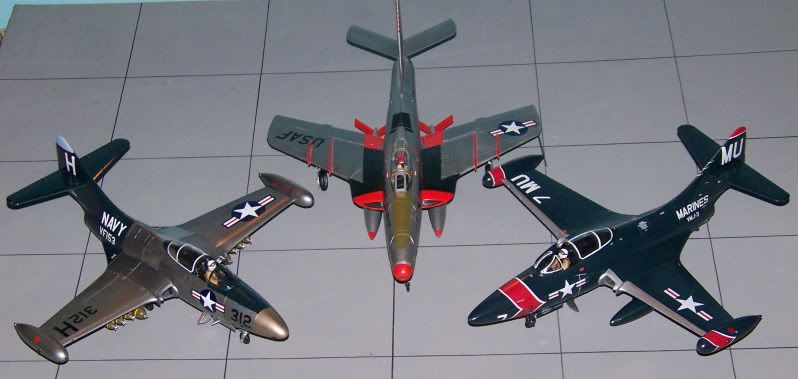This kit went together very well with excellent parts fit and only two issues. The fragile nose guns must be installed prior to closing up the fuselage and the two inside ones stick out quite a ways. Of course, I broke them off while building the plane and the carpet monster had them for a snack. The upper nose from the windscreen to the tip had a rather large step that had to be filled and sanded smooth. I used Alclad II, Duraluminum for the basic finish with Polished Aluminum for some panels and Burnt Iron on the nose. Model Master Gloss Sea Blue went on the empennage. The decals are from Repli-Scale sheet # SP-001 and they went on quite well. This sheet does not contain the word NAVY for the aft fuselage or the round warning circles for the tip tanks, so I had to use the ones from the kit decals. The carrier film was very milky when applied and I had to use several applications of Micro-Sol to get rid of it. The ordnance is from the kit and I used strips cut from a yellow decal sheet for the nose stripes.
The story of The Blue Tail Fly is quoted fromSquadron Signal, F9F Panther/Cougar, In Action # 1051.
"The Blue Tail Fly was a unique combination of two different F9F-5s. Both aircraft belonged to VF-153 aboard the USS Princeton. The story of The Blue Tail Fly goes that a Lt Richard (Stretch) Clinite was flying an experimental natural metal finish F9F-5 when he was hit by Communist flak and tail section of the aircraft was badly riddled, but he managed to get the Panther back aboard. In the meantime, Ens William Wilds, Jr. brought back a heavily damaged standard Glossy Sea Blue finish F9F-5 with its rear section intact. After mating the two airframes, The Blue Tail Fly was born. It flew 12 missions in that configuration before being returned to the States for rebuilding."
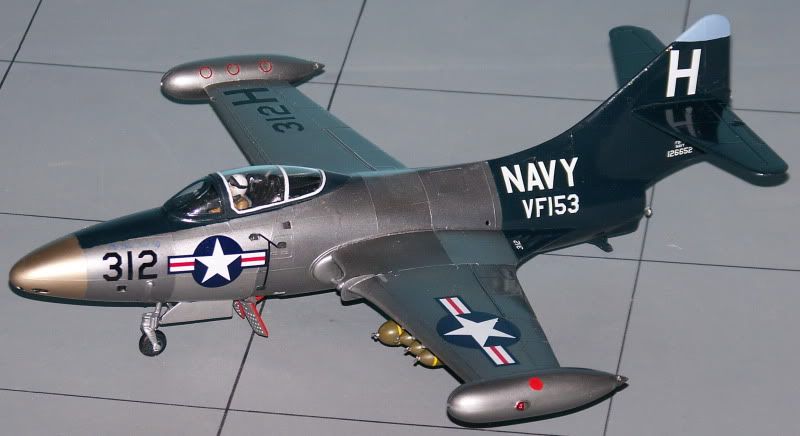
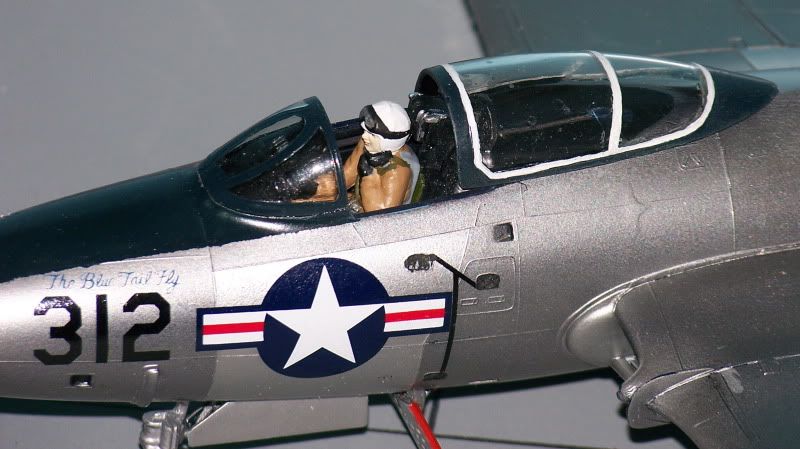

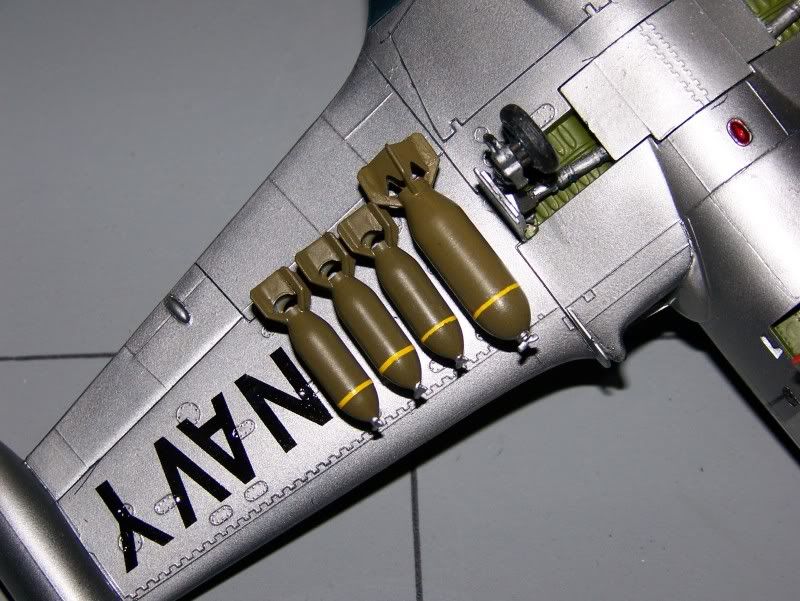
The Blue Tail Fly with an F9F-5P reconnaissance bird. Both are 1/48th Monogram kits.
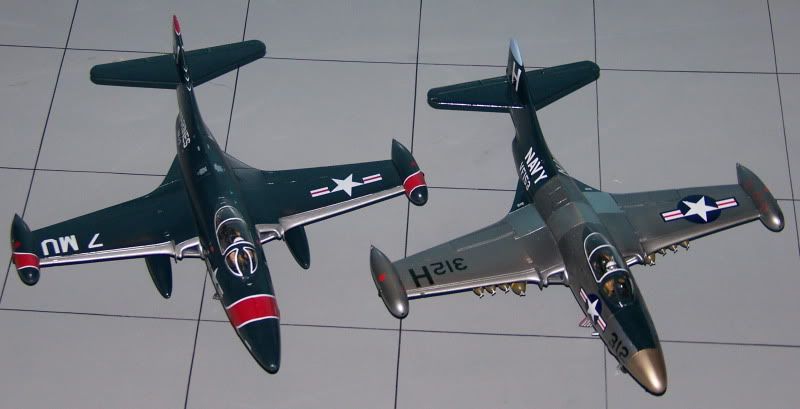
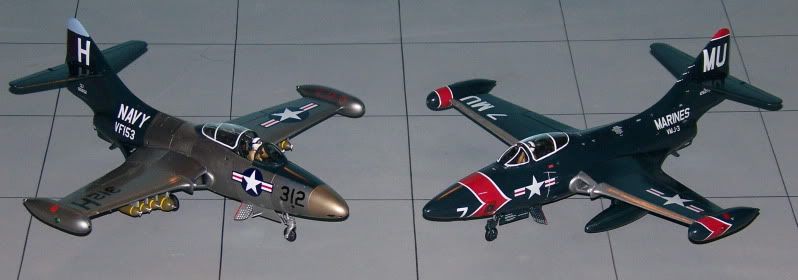
The three builds that I have completed since the first of the year.
